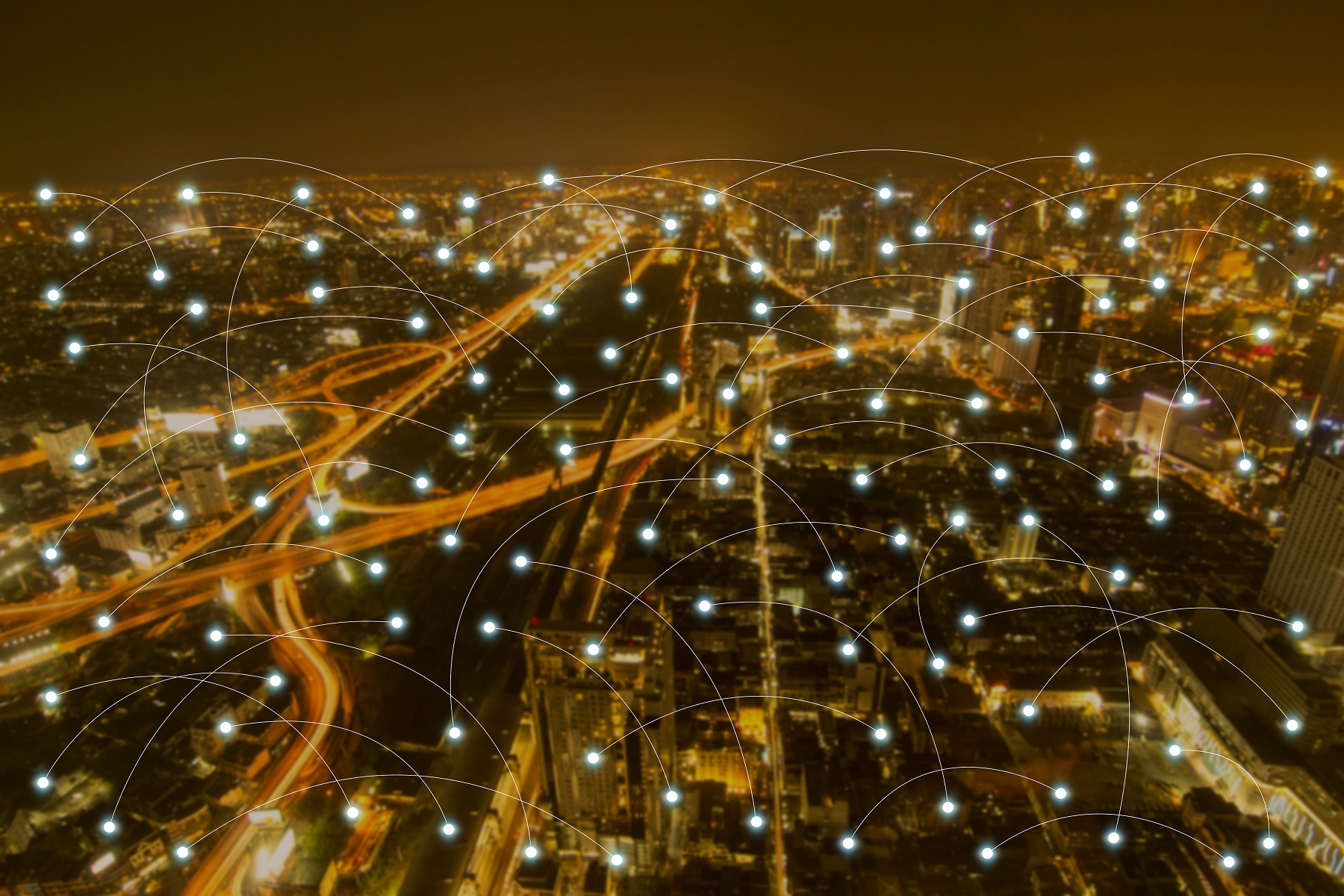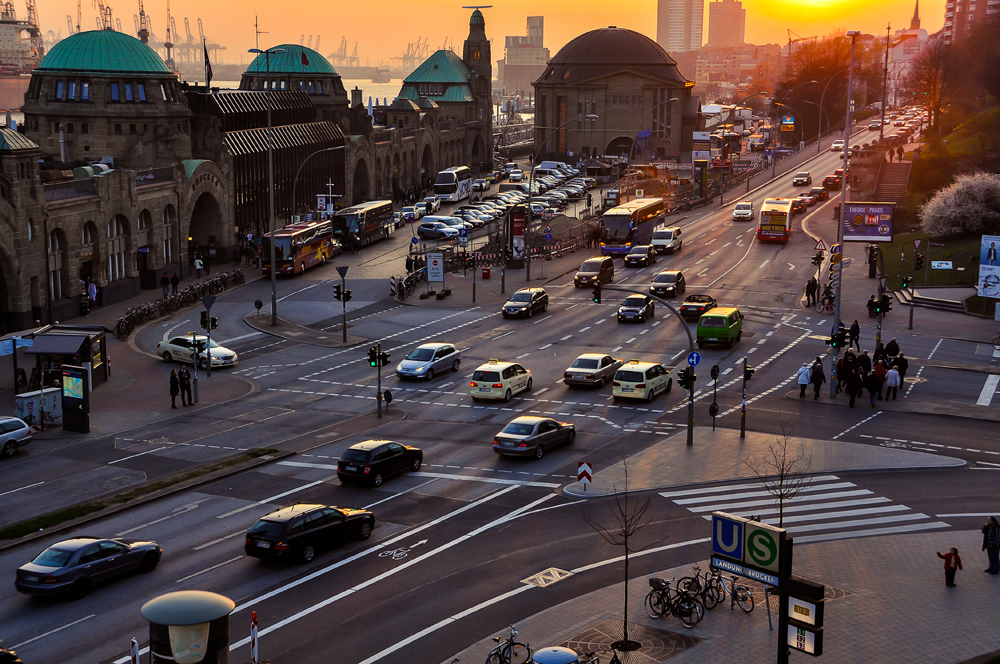
The ITS World Congress 2021 is taking place in one of the world’s leading city innovators in new transport solutions: Hamburg. Hamburg delivers cleaner transport through a mobility strategy as part of its Climate Action Plan, which includes closing roads to traffic, implementing a bicycle renting service, and building new subway routes.
“Hamburg has been a pioneer of mobility in Germany for some years. This is why we are very excited to host the ITS World Congress,” says Anjes Tjarks, Hamburg’s senator for transport and mobility transition. “At the moment, about 64% of our mobility share is through sustainable modes, and we want to increase this to 80% by 2030. Obviously, like many other cities, we want to make our city greener, healthier, more walkable, bikeable – just better for our citizens.”
Hamburg: home to autonomous vehicles
“It’s no surprise autonomous vehicles [AVs] will play a major role within the projects we will showcase at the event,” he continues. “We see a fully-automated city shuttle bus as a regular option for passengers, driving people through the very heart of Hamburg and the district Hafencity. Other projects fit in very well to the everyday life of our citizens and are solely designed to make daily mobility easier and more efficient. Because this is what ITS is all about in my eyes: making mobility greener, safer and more efficient for everyone.”
One major exhibitor at the World Congress is Yunex, formerly Siemens Mobility. “Now is the time to take action on future mobility,” stresses Nils Schmidt, vice president, intelligent traffic systems. “We only have to remember two figures – 37 billion and zero. In 2007, the amount of CO2 emissions was 37 billion tonnes per year, with 6.7 billion from road traffic. Zero is the amount we can bear. Creating a mobility environment for all must have the ambition to make cities more liveable by defining the right framework for the reduction of CO2 emissions, developing the right mobility mix, helping people to enjoy mobility.”
Yunex Traffic will be unveiling its new flexible and adaptable traffic and mobility management platform in Hamburg as well as its environmentally-sensitive traffic management solution to help minimise emissions. It will also showcase its digital twin simulation features which help authorities plan more efficiently and make mobility safer and more convenient, and cities more liveable.
At the ITS World Congress, expertise from around the world will share case studies of solutions already delivering greener, safer and more efficient transport. For example, the International Association of Public Transport, UITP, is working together with Ertico on the Show project to understand how co-operative, connected automated mobility (CCAM) such as robotaxis or last-mile driverless pods can be integrated into existing public transport networks.
“Automated vehicles will not solve anything as individual vehicles,” comments Henriette Cornet, UITP’s CCAM senior manager. “Less congestion and fewer emissions can only be achieved if CCAM is deployed as shared mobility. The Show project is about deploying shared, connected and electrified fleets of automated vehicles targeted at reducing urban CO2 emissions by 90% and noise by 30% while simultaneously improving access to transport and kilometres travelled for excluded groups such as the elderly, disabled or children.”
The project is truly global. It not only involves 69 partners and more than 20 cities in Europe, but works with organisations from the US, South Korea, Australia, China, Taiwan and Singapore as well. Between the 69 partners and world-wide pilot projects, AV fleets will carry more than 1.5 million passengers and 350 units of goods, integrating automated transport within the wider transport infrastructure complementing public transport and reducing the need for private trips, and does not just concentrate on technology but on legal, communication and validation matters too.
Transport energy savings
Another example of improvements to public transport provision is highlighted in the US, where the Southeastern Pennsylvania Transportation Authority is improving sustainability and equality of access through a range of initiatives.
“We have committed to achieving 20% of all our energy needs from solar power, and we have invested in solar farms throughout the Commonwealth of Pennsylvania,” says general manager Leslie Richards. “Three of our modes, our rail, subways and trolleys, are completely 100% clean with zero emissions and we will continue to make these investments.”
The region is also concentrating on better services to the most deprived areas, updating ticketing solutions to allow free transfers, speeding up journeys into downtown Philadelphia to help people use the transportation network to get to places where jobs are more widely available.
Electromobility is a key element of future transport services, and delegates in Hamburg will hear all about ground-breaking advances taking place in some countries in Africa. If the climate emergency is really going to be tackled, then limiting reductions in emissions in developed nations will not be enough. Delegates in Hamburg will be heartened to learn more about work being undertaken by the United Nations Environment Programme based in Nairobi, Kenya.
“We are currently supporting more than 40 low- and middle-income countries with the implementation of e-mobility projects, which focus on capacity building and policies to incentivise electric mobility and bring it to low and middle income countries,” explains programme officer Alexander Körner. “We are really not so much thinking about the individual car; we are more looking at fleet operations in the sense of e-buses in public transport systems, or adding electric two- and three-wheelers in as taxis, e-vans and e-light duty vehicles for last-mile delivery.”
In many African countries, mobility service operators are beginning to implement electric two- and three-wheelers alongside innovative solutions around battery charging and even battery swapping, and including schemes for integration of renewable power generation.
Körner explains that it makes good business sense: “If you compare fixed costs and operational costs of electric motorcycles used as taxis and if you compare them to conventional motorcycles, then you see that there is actually a very, very viable value proposition there,” he says. “Many motorcycles used as taxis are going 100km or more per day, using almost four litres of gasoline per 100km. By switching to electric propulsion, the fuel savings alone are substantial, around $3,000 to $4,000 over five years, largely outweighing higher purchase prices of e-motorcycles.”
He points to how African countries leapfrogged stages of development in other fields such as telecommunications “Developed nations can learn a lot from Africa, and the UN Environment Programme will give details in Hamburg,” he concludes. “People I work with see electric vehicles and shared mobility as a way of creating business opportunities; hence they come up with innovative ideas which the rest of the world can learn from.”
What is Ertico’s City Moonshot?
The ITS Congress will also feature the first announcement of findings from the global research made by Ertico’s City Moonshot initiative, which involves talking to 300 cities around the world to find out about different smart mobility challenges, needs and trends including data sharing, Mobility as a Service and the sustainability needs of the future.
Ertico is committed to delivering a physical event, with nearly 50 demonstrations and 20 technical visits that could not easily be replicated online. “Our community is missing the togetherness and networking that we used to have,” concludes Ertico CEO Jacob Bangsgaard. “We are certainly looking forward with great optimism and enthusiasm to the ITS World Congress in Hamburg, and we have been doing our utmost to prepare a high quality event for which we know that the ITS community has been waiting for so much.”
This topic was highlighted in the Ertico webinar series: Journey to the ITS World Congress. You can listen to Cities and Citizens: New Solutions for the New Normal here












